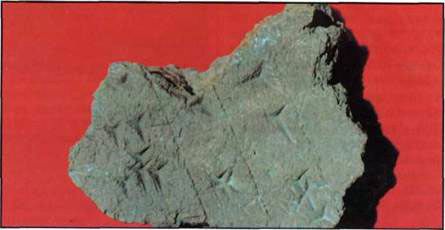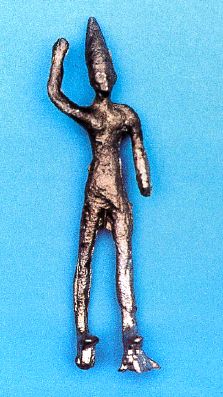Blog Archive
-
▼
2014
(1036)
-
▼
September
(148)
- America is Only About 70% Communist!
- Repórter da BBC: Google prepara-se para "suprimir ...
- Consolo nas Aflições
- Influence
- What did the Old Testament Prophet Daniel and Isaa...
- Arms, Arms and More Arms! or It’s Blood Money, Baby!
- War is a Racket!
- The Wild Man Prophecy and Its Affect on the Middle...
- O Perfeito Amor Lança Fora o Temor
- Meet the BRICS’ “New Development Bank”
- God's Design! - Tommy's Window - Read by Simon Pet...
- Beautiful - Tommy's Window! - song
- Alessandro Zanardi..Testimony - Overcoming Difficu...
- The Power of Love - Tommy's Window - narrated by S...
- Attitude - Tommy's Window
- Beyond Compare - Tommy's Window Slideshow - sung b...
- Palavras Poderosas Mudam o Mundo
- Desperate Prayer - Tommy's Window Slideshow - song
- Be Not Rash - song - Pethul
- Psalm 43: 3-5 Song
- With You - Tommy's Window
- Nabeel Qureshi on the history of Muhammad!
- Why Islam? Muslim Man Find the Truth - Nabeel Qureshi
- Did Jesus Rise from the Dead? Michael Licona vs. S...
- American Muslim became Christian after watching de...
- Como o Pai Me Enviou
- Meditations
- SALT14 - Paul Copan - "Is God a Moral Monster?"
- Let My People Think: Ravi Zacharias at Yale - Part 2
- Let My People Think: Ravi Zacharias at Yale Univer...
- THE CASE FOR THE RESURRECTION - Dr. Gary Habermas
- Q&A with Greg Koukl
- Exemplo Vivo
- A Way of Escape
- ‘There is no future in Iraq.’ Christian refugees e...
- Pretending we’re not at war
- O Sinal
- “How Much More…”
- Ethos - Woody Harrelson: American actor and activist
- Hyper-Polyglot, Greek Translator Speaks 32 Languages
- U.S. Aims to Curb Peril of Antibiotic Resistance
- Give Your Dream A Scheme
- The Story of Cody
- A História de Cody
- The Resurrection of Life
- 65 Apologetics Questions Every Christian Parent Ne...
- You Don’t Have to Be Perfect
- Você não precisa ser perfeito
- TRUTH: You’re more likely to be shot by a police o...
- “UP AGAINST THE WALL!!” - Mark McMillion
- Sovereign Man - Notes From the Field
- So What Does the World Bank Do Exactly?
- Scots’ inventions are fuel for independence debate
- Dreadnoughtus!
- Ainda que eu Andasse pelo Vale…
- TATTOOED JESUS: BLASPHEMY OR BLESSING?
- Worldwide Evidence of a Worldwide Flood - Jeremy W...
- Archaeologist confirms creation and the Bible Inte...
- Never mind those freedom fries. The French are Eur...
- Beating Back the Risk of Diabetes
- Se você Soubesse que Deus Está ao seu Lado
- When the Load Is Too Heavy
- Planos para Você Prosperar
- Why Am I Not Getting Answers to Prayer?
- Yes to What? – The Scottish Conundrum
- Mideast complexities confound US coalition effort
- Scotland bets on North Sea oil, even as the wells ...
- Ted Cruz and the most cynical political stunt of t...
- Are You Ready To Become Obsolete? What I’ve Learne...
- O Impacto de uma Pessoa
- Our Life’s Melody
- Have I Gotten It Wrong? Is It Really Worth It To H...
- Israeli soldiers from elite wire-tapping unit refu...
- The Secret of the Vine
- Exercício Físico e Espiritual
- CBS 60 Minutes: 300 death claims from 1976 swine f...
- About Me by Natasha Crain
- What Christian Parents Need to Know About New Age ...
- Pointers on Prayer
- Christianity + Submissive Wives = Domestic Violence?
- Sacrifício e Serviço a Deus
- Never Ever Quit!
- 26 Old Timeless Gospel Hymns
- Quotations on Death by Elisabeth Kubler-Ross
- Faça alguém Feliz
- As My Father Sent Me
- 9/11:EXPLOSIVE EVIDENCE - THE EXPERTS SPEAK OUT (F...
- Cura Maravilhosa
- "Smile!" song by Glee
- Smile! - devotional
- Start Working Out After 65
- Are Bees Really All That Busy?
- Iraq – a crisis for the Western elites? Or is it a...
- Early Will I Seek You - Psalm 63
- Atheist professor destroys evolution
- Probability and Evolution
- The Power Of The Brain | Part 3 | Dr. Caroline Leaf
- Why I Believe a Literal Six Day Creation Is Important
- Mr. President, the Less You Do the Better
- Former Israeli President Shimon Peres: Pope Franci...
-
▼
September
(148)
Featured Post
Where is America in Bible Prophecy? Books 1&2 and Bits'n Pieces Books 1&2&3&4 - Index to Chapters of Books
By Dennis M. Edwards All Bible verses are from the King James Bible, although I have changed some of the old English. Any similarity ...

Popular Posts
My Story
Like many others I have a story to tell.
I am not much different from you.
I am a normal guy. But 45 years ago
I was a quiet confused youth facing
the prospect of Vietnam when God
reached down and touched me.
In this blog, I will try and share all that
I have learned and am learning.
Fight for Your Faith was made to help
strengthen your convictions and faith.
A lost and dying world needs you!
Be strong! - Dennis








1 Comments:
Good article!
Post a Comment